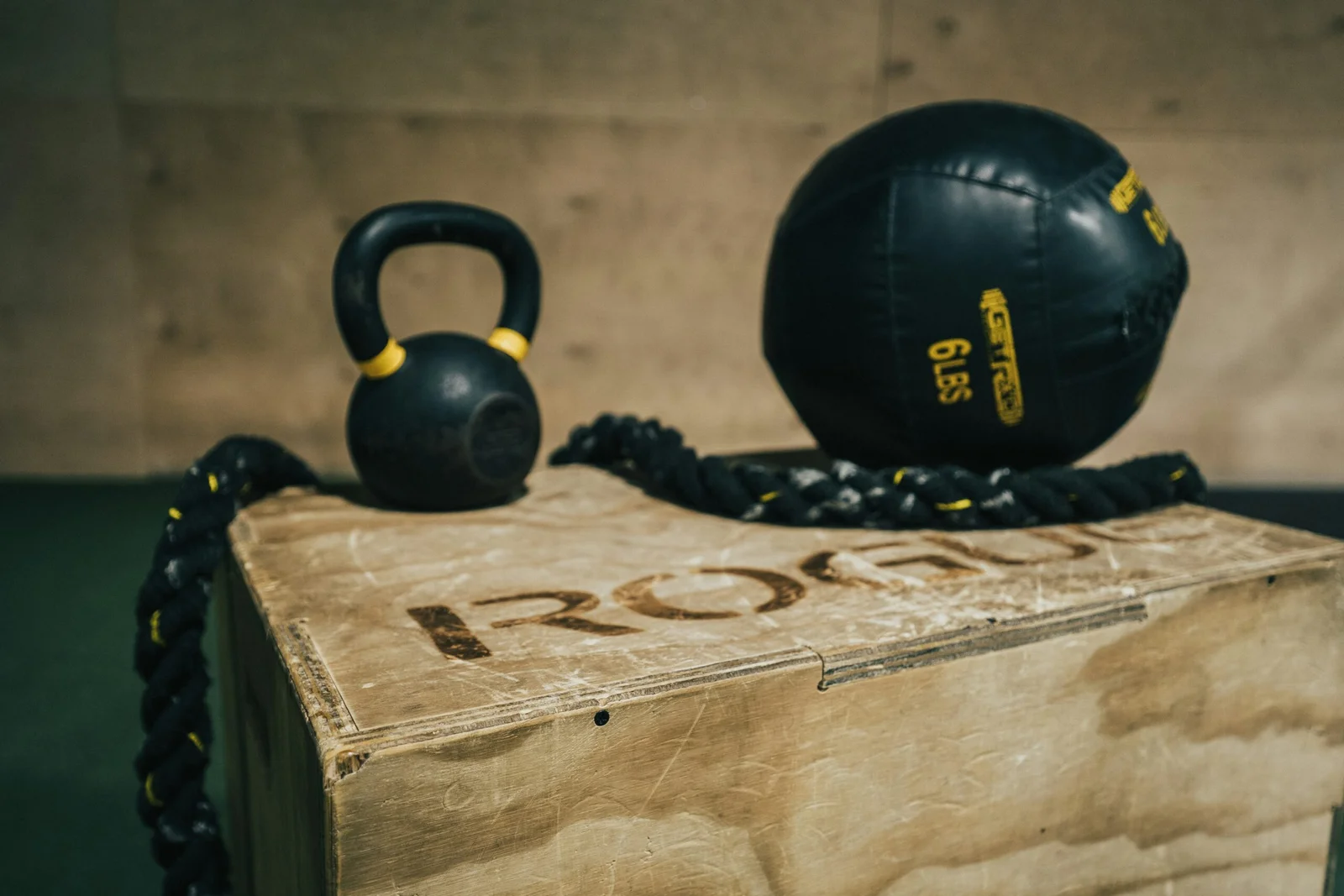Top Home Workouts to Burn Fat and Tone Your Body
Introduction to Home Workouts
In today’s fast-paced world, the concept of home workouts has gained significant relevance and acceptance. With increasing demands on one’s time, many individuals find it challenging to commit to a regular gym schedule. This scenario has led to a growing trend of exercising at home, which offers a flexible and convenient alternative. Home workouts enable individuals to structure their fitness routines around their personal schedules, eliminating common barriers such as travel time and gym hours.
The cost-effectiveness of home workouts also plays a crucial role in their popularity. Unlike gym memberships that often come with monthly fees, exercising at home can be tailored to fit any budget. Many effective routines require little to no equipment, making it easier for individuals to begin their fitness journey without a significant financial investment. This accessibility democratizes fitness, allowing more people to engage in exercise that suits their lifestyle.
One of the most important aspects of home workouts is the ability to exercise in a comfortable and familiar environment. Being in one’s personal space can enhance motivation and reduce anxiety associated with working out in public. It allows individuals to focus solely on their fitness goals, primarily burning fat and toning their bodies without the distractions present in a gym setting.
As we delve deeper into the discussion on effective strategies for home workouts, it is essential to recognize the primary objectives for many: fat reduction and body toning. These goals serve as a foundation for various workout plans and regimes that can be seamlessly integrated into daily life. The following sections will explore specific workout options designed to meet these fitness aspirations effectively.
Understanding Fat Burning
Fat burning refers to the process by which the body utilizes stored fat as a source of energy, particularly during physical activities. It involves a complex interplay of metabolic processes that convert fat molecules into usable energy, primarily driven by the body’s energy demands. The key to effective fat burning lies in achieving a calorie deficit, where the number of calories burned exceeds the number of calories consumed through diet. This deficit encourages the body to tap into its fat reserves for energy, facilitating weight loss and fat reduction over time.
Caloric intake and expenditure are essential components of metabolism, which is the biochemical process governing all physical and physiological functions in the body. Engaging in both cardiovascular and strength training workouts enhances metabolism, as these activities require increased energy expenditure. Notably, maintaining a balanced diet is equally crucial; a well-rounded intake of nutrients can support metabolic health and optimize the body’s fat-burning capabilities. Foods high in protein, for instance, may contribute to muscle maintenance, while healthy fats and complex carbohydrates provide sustained energy during workouts.
It is important to address some common myths surrounding fat burning, one being the idea of spot reduction—the belief that one can target fat loss in specific areas of the body through localized exercise. However, research indicates that fat loss occurs throughout the body, not just in specific regions. Furthermore, focusing solely on workouts without incorporating healthy eating habits may hinder overall fat loss goals. By embracing a holistic approach, combining regular exercise with a nutritious diet, individuals can effectively promote fat burning and enhance body tone while maintaining overall health and well-being.
The Importance of Toning Muscles
Toning muscles is a critical aspect of fitness that extends beyond mere aesthetics. It plays a significant role in achieving a leaner physique while simultaneously enhancing overall health and well-being. Muscle toning refers to the process of developing and maintaining muscle firmness and strength, often resulting from resistance training and targeted exercise routines. By incorporating muscle-toning exercises into a workout regimen, individuals can not only improve their physical appearance but also boost their functional strength, enabling them to perform everyday activities with greater ease.
Additionally, toning muscles contributes to an increased metabolic rate, which is essential for weight management. When muscle mass is developed, the body tends to burn more calories, even at rest. This is particularly beneficial for those seeking to shed unwanted fat while achieving muscle definition. As one engages in home workouts that prioritize both resistance and cardiovascular exercises, the cumulative effect fosters a balanced physique characterized by both strength and endurance.
Moreover, emphasizing a combination of cardio and strength training in home workouts is vital for effective toning. While cardio exercises are excellent for fat loss and improving cardiovascular health, strength training is crucial for building and maintaining muscle mass. Integrating the two forms of training helps to maximize results and ensures that the body remains toned and fit. Simple bodyweight exercises, resistance bands, and free weights can be easily incorporated into home workout routines, providing an accessible means to develop toned muscles without the necessity of gym equipment.
Ultimately, understanding the significance of muscle toning not only encourages individuals to adopt more effective fitness strategies but also promotes a holistic approach to maintaining health and well-being. Through consistent engagement in muscle toning and a comprehensive workout routine, individuals can achieve admirable results and enhance their quality of life. This balanced approach enables one to cultivate a stronger, more resilient body capable of meeting daily challenges.
Bodyweight Exercises for Fat Loss
Bodyweight exercises are an excellent means to achieve fat loss and enhance muscle tone without the need for specialized equipment. These exercises leverage the individual’s body weight as resistance, making them accessible and practical for home workouts. Below, we detail several effective bodyweight exercises that help engage multiple muscle groups while promoting fat loss.
Push-Ups: Starting in a plank position, with your hands slightly wider than shoulder-width, lower your body until your chest touches the ground. Keep your elbows close to your body. Push back up to the starting position. This exercise primarily targets the chest, shoulders, and triceps while also engaging the core, thus supporting fat loss.
Squats: Stand with feet shoulder-width apart and lower your body as if sitting back into a chair. Keep your back straight and knees over your toes, and then return to standing. Squats effectively work the quadriceps, hamstrings, glutes, and lower back, contributing to overall strength and metabolic burn, critical for fat loss.
Lunges: Step forward with one leg, lowering your hips until both knees are bent at about a 90-degree angle. Push back to the starting position and switch legs. This exercise primarily engages the glutes, quadriceps, and hamstrings while improving balance and coordination, aiding in fat burning.
Planks: Begin in a forearm plank position, with your body in a straight line from head to heels. Hold this position, ensuring your core is engaged and back is flat. Planks are effective for strengthening the core, shoulders, and back, promoting stability and supporting overall fat loss.
Incorporating these bodyweight exercises into a consistent home workout routine can significantly aid in burning fat and toning the body. By focusing on the correct form and maintaining a steady tempo, individuals can maximize their results and efficiently work toward their fitness goals.
Incorporating High-Intensity Interval Training (HIIT)
High-Intensity Interval Training, commonly referred to as HIIT, is a popular exercise regimen recognized for its efficiency in burning fat and toning the body. This training style alternates between short bursts of intense activity and recovery periods, allowing individuals to achieve a high level of fitness in a relatively short amount of time. The principle behind HIIT is that the intense effort paired with brief rest activates different energy systems in the body, leading to increased calorie burn even after the workout has concluded.
One of the key advantages of HIIT is its adaptability, making it an excellent choice for home workouts. There is no requirement for specialized equipment—bodyweight exercises can be easily employed to maximize effectiveness. A HIIT session can typically last from 15 to 30 minutes, incorporating various exercises such as jumping jacks, burpees, high knees, and mountain climbers. To create an effective HIIT routine, you should start by selecting four to six exercises. Each exercise should be performed at maximum intensity for 20 to 45 seconds, followed by a rest period of 10 to 30 seconds, depending on your endurance and fitness level.
When designing your HIIT workout, it is essential to focus on maintaining proper form and technique, especially during high-intensity efforts. Beginners may opt for a 1:2 work-to-rest ratio, while those with more experience can challenge themselves with a 2:1 ratio. To enhance the effectiveness of your HIIT routine, consider incorporating varied movements that engage different muscle groups, ensuring a full-body workout that promotes toning and fat loss. By consistently integrating HIIT into your exercise regimen, you will likely observe improvements in stamina, strength, and body composition over time.
The Role of Resistance Bands in Home Workouts
Resistance bands have emerged as a valuable addition to home workout routines, offering an effective means of fat loss and body toning. These versatile tools come in various types, including loop bands, tube bands with handles, and therapy bands, each serving distinct purposes that cater to different fitness levels and exercise preferences. Their portability makes them an ideal choice for individuals looking to maintain an active lifestyle while exercising at home.
Incorporating resistance bands into bodyweight exercises can significantly enhance the intensity of workouts. For instance, adding bands to squats not only increases the resistance but also engages the core and stabilizing muscles. This leads to improved muscular strength and endurance, ideal for fat-burning workouts. Additionally, exercises like lateral band walks and banded push-ups effectively target specific muscle groups, including the glutes, shoulders, and chest. The progressive resistance provided by the bands allows for gradual strength building, making it suitable for both beginners and advanced practitioners.
One popular exercise involving resistance bands is the seated row, which effectively targets the back muscles. By anchoring the band at a secure point and pulling it toward the torso, individuals can cultivate strength in their upper body. Similarly, banded deadlifts can complement the traditional movement by engaging the hamstrings and lower back more intensely. Resistance bands also prove beneficial for facilitating a range of motion in mobility exercises, focusing on flexibility as well as strength.
Utilizing resistance bands in home workouts not only diversifies exercise routines but also maximizes outcomes in fat loss and body toning. With a myriad of exercises available, these bands can be tailored to suit personal fitness goals and preferences. As a result, they represent an efficient and accessible tool for anyone committed to a healthier lifestyle from the comfort of their home.
The Benefits of Core Workouts
Core workouts are an essential component of any fitness regimen, playing a pivotal role in both fat burning and body toning. A strong core not only improves stability and balance but also enhances overall athletic performance and functional movement in daily activities. The core consists of various muscles that include the abdominal muscles, obliques, lower back, and pelvis, which work collectively to support the spine and facilitate movement.
Engaging in core exercises can effectively increase your metabolic rate, contributing to fat loss. When the core is properly strengthened, the body becomes more efficient at mobilizing fat stores for energy, particularly during high-intensity workouts. Additionally, core workouts improve posture, which can decrease the risk of injury and enhance the effectiveness of other exercises. By incorporating core-focused routines, individuals can achieve a toned midsection while improving their endurance and strength.
Some effective core exercises include planks, Russian twists, and mountain climbers. Planks are an isometric exercise that targets the entire core, requiring the individual to maintain a position similar to a push-up while resting on their forearms and toes. This exercise can be progressed by extending hold time or incorporating variations, such as side planks. Russian twists involve sitting on the floor, leaning back slightly, lifting the feet off the ground, and twisting the torso to touch the floor beside you, alternating sides. This exercise effectively engages the oblique muscles. Lastly, mountain climbers combine a plank position with a dynamic movement, driving knees towards the chest in a running motion, providing not only a core workout but also cardiovascular benefits.
Incorporating these exercises into a routine can significantly enhance fitness levels and promote overall well-being. Core workouts are crucial in achieving fitness goals, aiding in fat burning, toning, and enhancing bodily functions.
Creating a Balanced Weekly Workout Plan
When assembling a cohesive weekly workout plan, it is crucial to incorporate various elements that facilitate comprehensive fitness improvement. A balanced approach typically includes cardiovascular exercises, strength training, high-intensity interval training (HIIT), and core workouts. Each of these components contributes uniquely to fat burning and body toning. Below is a sample schedule that can be customized to fit individual needs and fitness levels.
For a well-rounded week, consider the following outline:
- Monday:
- Tuesday: Strength Training (focus on upper body with exercises like push-ups, dumbbell presses, and rows)
- Wednesday: HIIT (20-30 minutes of alternate sprint and recovery intervals)
- Thursday: Core Workout (planks, Russian twists, and mountain climbers for 20 minutes)
- Friday: Cardio (swimming or a dance workout for variety)
- Saturday: Strength Training (focusing on lower body with squats, lunges, and deadlifts)
- Sunday: Rest day or gentle yoga to promote recovery.
Encouraging variety in your workouts helps prevent monotony and keeps motivation high. Adjust your routine based on your fitness level; for beginners, shorter sessions or fewer total weekly workouts may be appropriate. Conversely, those with more experience may increase the duration or intensity. This adaptability is vital for long-term success and sustainability of the workout regimen.
Incorporating active rest or light activities can also be beneficial on off days to sustain an active lifestyle without overexertion. Remember that nutrition and hydration play a vital role in your overall fitness journey, further supporting the effectiveness of your workout plan. By following a balanced schedule, you can optimize your results and enjoy a fulfilling fitness journey.
Maintaining Motivation and Overcoming Challenges
Committing to at-home workouts can sometimes present various challenges that hinder progress and motivation. One of the most significant obstacles individuals encounter is a lack of motivation, which may result from distractions in the home environment or the absence of a structured schedule. To combat this, setting clear and achievable fitness goals is essential. By defining short-term and long-term objectives, individuals can create a roadmap that not only guides their efforts but also serves as a source of inspiration. For example, aspiring to complete a certain number of workouts each week or aiming to increase the duration or intensity can significantly enhance focus.
Distractions are another common issue when engaging in fitness routines at home. Establishing a designated workout space can help mitigate this problem. Choosing a quiet corner, clearing it of clutter, and equipping it with essential workout gear promotes a positive mindset, signaling to the brain that it is time to exercise. Additionally, creating a structured schedule for workouts can aid in prioritizing fitness amid daily responsibilities. Allocating specific times for exercise allows it to become a consistent part of the routine, fostering discipline and minimizing the likelihood of avoidance.
Tracking progress is a crucial element in maintaining motivation. Keeping a record of workouts, such as the types and durations of exercises completed, not only highlights accomplishments but also serves to identify areas requiring improvement. Utilizing apps or journals for logging workouts can provide visual representation of progress, energizing individuals to keep moving forward. Finally, engaging with a community—whether through social media, local fitness groups, or online classes—can facilitate shared accountability, encouragement, and support from like-minded individuals. By implementing these strategies, one can build a consistent habit of at-home workouts, paving the way for a healthier and more toned body.







